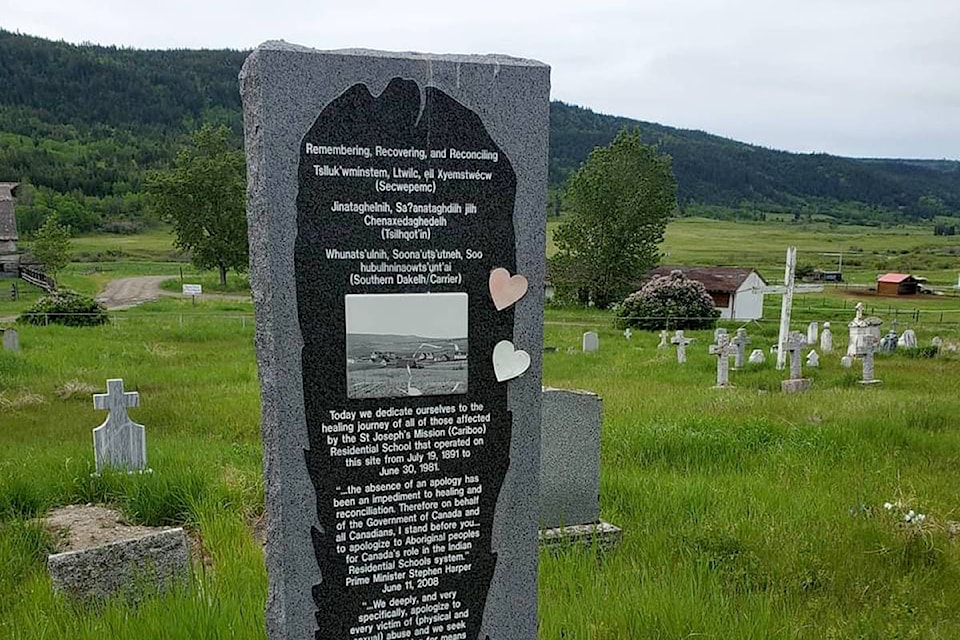Williams Lake First Nation (WLFN) announced Wednesday, June 9 it is developing a strategy for a comprehensive ground analysis of the lands surrounding the former site of the St. Joseph’s Mission Residential School.
Since the confirmation of unmarked graves of 215 children at the Kamloops Indian Residential School was announced on May 27, WLFN Chief Willie Sellars said it has been a whirlwind of emotion as longstanding scars have been painfully reopened within the community, region and throughout Canada.
“The legacy of St. Joseph’s extends well beyond WLFN, or even the Secwepemc, and has impact on the Tsilhqot’in, Dakelh and other Aboriginal groups,” Sellars noted in a news release.
“Our leadership has taken time to gather input and carefully consider our approach and response in relation to the St. Joseph’s Mission site, which is in the heart of our T’exelc territory.”
Sellars said it is clear from discussions with elders in the community, and other communities, that there is considerable knowledge about the horrendous abuse and atrocities that took place for nearly a century.
“It is time to complete the investigation and hopefully find some form of closure on this terrible chapter of Canadian history.”
Read more: Indigenous communities rocked by Kamloops residential school burial discovery
St. Joseph’s Mission operated as a residential school from 1886 to 1981 and was administered by Roman Catholic Oblate missionaries. It was located just a few kilometres away from WLFN’s main community known as Sugar Cane.
“Our council met with respected elders immediately after the TteS (Kamloops) discovery,” said WLFN Coun. Chris Wycotte. “Our knowledge keepers communicated a strong desire to advance the analysis at St. Joseph’s, emphasizing the necessity of careful protocol and ceremony that our ancestors could be proud of.”
WLFN has held three distinct ceremonies, including an inclusive community ceremony in Williams Lake at Williams Lake Secondary School, a four-day sacred fire held at the Sugar Cane Arbour, and a private ceremony at St. Joseph’s Mission that included cultural leaders from Secwepemc, Southern Dakelh, and Tsilhqot’in communities.
Read more: Williams Lake First Nation turns to ceremony, one another in search of healing
“Our elders have reminded us that there is nothing political about honouring our lost loved ones. Empathy, compassion, and honouring our ancestors’ knowledge will give our community strength as we advance this important search,” said WLFN Coun. Shawna Philbrick.
“We stand with the Tsilhqot’in, Dakelh and all other nations that were impacted by the atrocities at St. Joseph’s and promise that we will be tireless in our pursuit of truth and justice.”
The ground analysis will be led by a comprehensive team made up of community elders, cultural advisors, archaeological professionals, WLFN staff and selected professional partners.
Currently the site is owned by a private landowner, however, the band said preliminary discussions with the owner have indicated support of WLFN’s desire to complete the search by using the same ground penetrating radar technology used to discover the unmarked graves at the Kamloops site.
Sellars further acknowledged he has been in communication with Marc Miller, minister of Indigenous services, and noted the Canadian government has committed to Indigenous communities funding support will be made available once a formal proposal has been submitted.
news@wltribune.com
Like us on Facebook and follow us on Twitter
